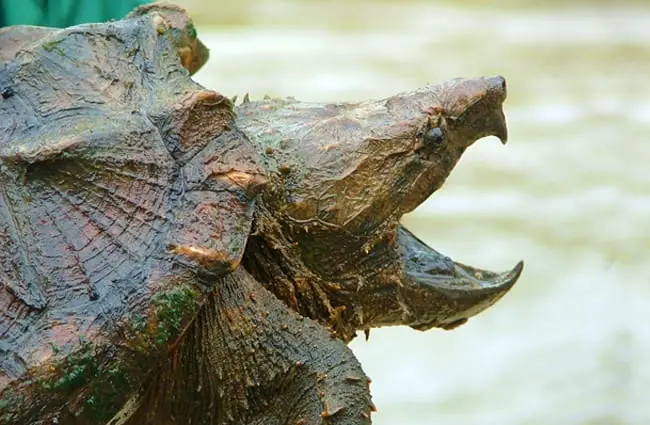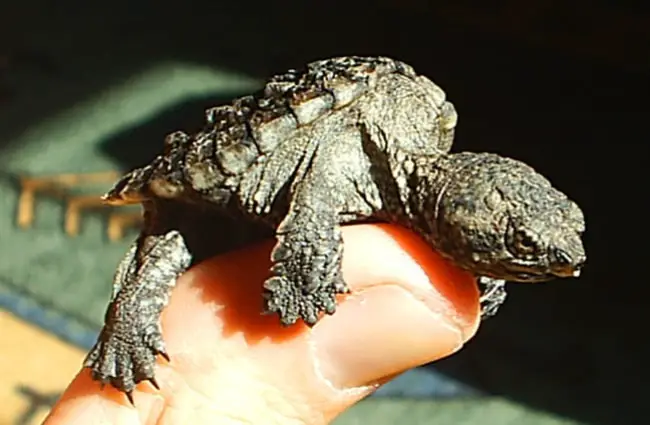An Introduction to the Ancient World of Snapping Turtles
Few creatures evoke a sense of primordial mystery quite like the snapping turtle. These remarkable reptiles, often appearing as living relics from a bygone era, are captivating subjects for both casual observers and dedicated researchers. Characterized by their powerful jaws, distinctive appearance, and surprisingly adaptable nature, snapping turtles play a vital role in the ecosystems they inhabit. This comprehensive guide delves into the fascinating life history, behavior, and ecological significance of these often misunderstood animals.

Understanding Snapping Turtle Species
The term “snapping turtle” generally refers to two distinct species: the common snapping turtle Chelydra serpentina and the alligator snapping turtle Macrochelys temminckii. While both share the characteristic strong bite, they differ considerably in size, habitat, and behavior.
Common Snapping Turtle
The common snapping turtle is widely distributed throughout eastern North America. It is a relatively large turtle, with adults typically weighing between 10 and 35 pounds, although some individuals can exceed 70 pounds. Its carapace, or upper shell, is typically brown or black, and it possesses a long, serrated tail. They are opportunistic feeders, consuming both plants and animals.
Alligator Snapping Turtle
The alligator snapping turtle is a truly massive reptile, considered one of the largest freshwater turtles in North America. Adults routinely weigh over 100 pounds, and exceptional individuals can exceed 200 pounds. This species is found primarily in the southeastern United States, in rivers, canals, and swamps. As its name suggests, it has a heavily armored carapace similar to that of an alligator and a powerful, hooked beak used to ambush prey. They are specialized carnivores, with a diet focused on fish, invertebrates, and occasionally waterfowl.
Habitat and Distribution
Snapping turtles are highly adaptable and can thrive in a variety of aquatic habitats. Common snapping turtles are found in ponds, lakes, rivers, marshes, and even roadside ditches. They prefer areas with muddy bottoms and abundant vegetation. Alligator snapping turtles require larger, deeper bodies of water with complex structures like submerged logs and vegetation for ambush predation.

Evolutionary History
The snapping turtle lineage dates back to the late Cretaceous period, over 70 million years ago. Fossil evidence suggests that early snapping turtles were similar in appearance to modern species, possessing powerful jaws and robust shells. Their evolutionary success is likely attributable to their adaptability and opportunistic feeding habits. The Chelydridae family, to which snapping turtles belong, represents a relatively ancient lineage of turtles, with few surviving members. Their morphology has changed little over millions of years, making them fascinating subjects for studying evolutionary stasis.
Diet and Feeding Behavior
Snapping turtles are opportunistic feeders, meaning they will consume a wide range of food items. Young snapping turtles are primarily carnivorous, feeding on insects, crustaceans, and small fish. As they mature, their diet expands to include larger prey such as fish, amphibians, snakes, waterfowl, and mammals. They are also known to scavenge on dead animals.
Alligator snapping turtles employ a unique feeding strategy. They lie in wait on the bottom of the water, with their mouths open, using an appendage that resembles a worm on their tongue to lure unsuspecting fish within striking distance. This ambush predation tactic allows them to capture prey efficiently with their powerful jaws.
Reproduction and Life Cycle
Snapping turtles typically breed in the spring or early summer. Males will actively seek out females, engaging in courtship displays that involve nudging and biting. After mating, the female will search for a suitable nesting site, typically a sandy or loamy bank near the water. She will dig a nest cavity and deposit a clutch of 20 to 50 eggs.
The eggs are left to incubate for 70 to 120 days, depending on temperature. Upon hatching, the young turtles are independent and must fend for themselves. They grow relatively slowly, reaching sexual maturity at around 8 to 10 years of age. Snapping turtles can live for over 30 years in the wild, and some individuals have been documented to live for over 100 years.

Ecological Role and Interactions
Snapping turtles play a vital role in maintaining the health of aquatic ecosystems. As both predators and scavengers, they help to control populations of other animals and remove dead organic matter. Their digging activities can also help to aerate the soil and create habitat for other species.
Snapping turtles interact with a variety of other animals. They are preyed upon by larger predators such as alligators, raccoons, and birds of prey, particularly when they are young. They also compete with other predators for food. In some cases, they may exhibit commensalistic relationships with other animals, such as providing nesting sites for certain bird species.
Snapping Turtles and Human Interactions
Historically, snapping turtles were harvested for food, and their shells were used for various purposes. However, due to declining populations and conservation concerns, harvesting regulations are now in place in many areas. Snapping turtles are also occasionally encountered by humans in recreational settings.
It is important to exercise caution around snapping turtles, as they are capable of delivering a powerful bite. However, they are generally not aggressive toward humans unless provoked. If you encounter a snapping turtle, it is best to observe it from a safe distance and avoid disturbing it. Never attempt to handle a snapping turtle, and be particularly careful around nesting females.
Conservation Status and Threats
Both common and alligator snapping turtles face a number of threats, including habitat loss, pollution, road mortality, and illegal harvesting. The alligator snapping turtle is listed as a threatened or endangered species in several states, and its populations continue to decline. Conservation efforts are underway to protect these species and their habitats.

For the Zookeeper: Captive Care Considerations
Providing appropriate care for captive snapping turtles requires a significant commitment. Large, spacious enclosures with both aquatic and terrestrial areas are essential. Water quality must be maintained through rigorous filtration and regular water changes. Diet should consist of a varied mix of fish, invertebrates, and commercially prepared turtle food. Providing enrichment activities, such as logs, rocks, and hiding places, is crucial for promoting natural behaviors. Regular veterinary checkups are also essential for monitoring their health.
Spotting Snapping Turtles in the Wild: A Guide for Nature Enthusiasts
Snapping turtles are most active during the warmer months, from spring to fall. They can be found in a variety of aquatic habitats, including ponds, lakes, rivers, and marshes. Look for them basking on logs or submerged vegetation, or slowly swimming near the surface. Nesting females can be found digging nests near the water during the spring and early summer. Remember to observe them from a safe distance and avoid disturbing them.
Fascinating Facts About Snapping Turtles
- Snapping turtles have a lifespan of over 30 years in the wild, and some individuals may live for over 100 years.
- Alligator snapping turtles can remain submerged for extended periods, up to an hour or more.
- The common snapping turtle is the state reptile of several states, including New York and Michigan.
- Snapping turtle shells are covered in keratin, the same material that makes up human fingernails and hair.
- Baby snapping turtles are fully independent and receive no parental care.

Conclusion
The snapping turtle stands as a testament to the enduring power and resilience of ancient lineages. These fascinating creatures play a crucial role in maintaining the health of aquatic ecosystems, and their unique adaptations make them captivating subjects for study. By understanding their life history, behavior, and conservation needs, we can ensure that these remarkable reptiles continue to thrive for generations to come.

![Red Angus Closeup of a beautiful Red Angus cowPhoto by: U.S. Department of Agriculture [pubic domain]https://creativecommons.org/licenses/by/2.0/](https://animals.net/wp-content/uploads/2020/03/Red-Angus-4-238x178.jpg)




![Red Angus Closeup of a beautiful Red Angus cowPhoto by: U.S. Department of Agriculture [pubic domain]https://creativecommons.org/licenses/by/2.0/](https://animals.net/wp-content/uploads/2020/03/Red-Angus-4-100x75.jpg)

